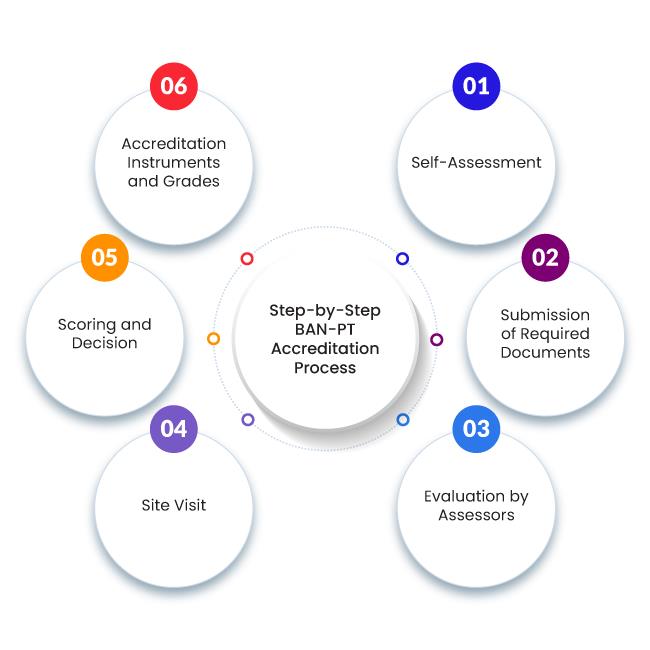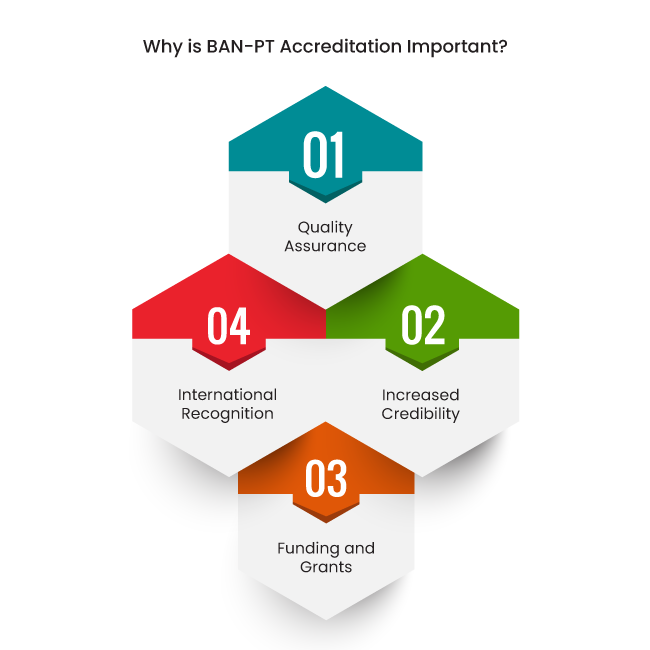Academic success, organizational efficiency, and students' holistic development are the primary objectives of educational institutions. However, attaining these goals and maintaining institutional excellence is challenging, especially due to evolving educational methods and diverse learning needs.
That is where BAN-PT accreditation acts as a necessary quality assurance mechanism for universities in Indonesia.
What is BAN-PT Accreditation?
BAN-PT (Badan Akreditasi Nasional Perguruan Tinggi) is an independent accreditation organization that the Indonesian government established in 1994. It functions under the Ministry of Education, Culture, Research, and Technology, and it carries out assessment and accreditation of universities and their programs.
The accrediting agency evaluates institutional governance, academic programs, faculty qualifications, research output, and facilities. It has established a systematic accreditation framework, which helps to ensure institutional accountability and educational excellence.
The BAN-PT accreditation process entails internationally recognized criteria, making sure that the Indonesian universities maintain quality standards. Furthermore, the accreditation process is a crucial step that allows institutes to identify areas that need further improvement.

Step-by-Step BAN-PT Accreditation Process
1. Self-Assessment
In the first step, universities conduct a self-evaluation, wherein they collect data on academic programs, faculty qualifications, research activities, infrastructure, student services, and administration. Self-assessment allows them to determine the areas where they excel and the areas that require strategic solutions.
Institutes must ensure to prepare an unbiased and objective self-assessment report (Laporan Evaluasi Diri or LED) and develop an appropriate plan of action to address the recurrent issues.
2. Submission of Required Documents
The second step involves compiling a comprehensive set of documents, including faculty and student data, research output, institutional profiles, academic policies, and financial reports. Likewise, it must include evidence of continuous quality improvement initiatives through which the institute has been trying to improve upon its shortcomings.
Following a well-organized BAN-PT’s guidelines is necessary for the accurate document submission and review process. Besides, a lack of proper and well-structured documents can lead to procedural delays and low accreditation scores.
An error-free documentation process is central to the accreditation process; therefore, institutes can rely on university ERP software that streamlines all crucial data effectively. The system helps to avoid discrepancies and ensure that the documents reflect accurate details of academic and administrative functions.
How MasterSoft Helps UAE Institutes Meet CAA Standards
3. Evaluation by Assessors
The accrediting agency assigns a team of experts once the institute submits the official self-assessment report. The team consists of higher education experts and academics who evaluate whether the university complies with the accreditation standards.
The evaluation includes an in-depth review, wherein the team evaluates the self-assessment report (LED) along with the supporting documents. They conduct an analysis of data, which encompasses the following factors:
- Faculty qualifications and expertise
- Curriculum design and implementation
- Student learning outcomes
- Research activities and output
- Community engagement and services
- Quality management and assurance systems
- Facilities and infrastructure
Consequently, assessors conclude whether a university functions according to the standards and meets the benchmark for quality education. Simultaneously, they must provide additional documents as per the assessors’ request.
4. Site Visit
The on-site visit is a significant step in the accreditation process, allowing the team of experts to verify the information that the institute mentioned in the LED report. Universities must provide clarification in case the visit leads to identifying any inconsistencies.
Assessors interact with various stakeholders, including faculty members, to determine their educational qualifications, instructional methodologies, and research activities. They gather feedback from students to understand the latter’s learning experience.
The expert team interacts with staff and administrators to assess the institutional administration, student support services, and program management. Also, some of the infrastructure of the university that undergoes inspection is as follows:
- Classroom and laboratories
- Libraries and computer labs
- Research facilities and equipment
- Student support services
Assessors may evaluate the pedagogical strategies and teaching activities by observing the teaching and learning activities, like seminars and lectures. Hence, universities must make necessary preparations for the site visit and maintain transparency and cooperation throughout the process.
5. Scoring and Decision
A combination of qualitative and quantitative methods is central to evaluating a program or university. Hence, the assessors assign a numerical score depending on pre-established criteria or rubrics.
At the same time, they give equal emphasis to various aspects of the program and institute, such as teaching strategy effectiveness, depth of research, and the impact of community service. The scoring is according to the various criteria that the BAN-PT has established, which encompasses different degrees of quality.
Each criterion of quality has a particular weight or importance, highlighting the university or program’s overall quality. The assessors use standardized rubrics to ensure the evaluation and scoring process is objective and consistent.
Moreover, the LED report analysis and on-site visit provide them with appropriate information to give a score. They prepare a comprehensive report that includes the findings and a detailed analysis of an institute's performance and the program’s effectiveness according to the criteria.
6. Accreditation Instruments and Grades
BAN-PT utilizes IAPS 4.0 (Instrumen Akreditasi Program Studi 4.0), which is an outcome-based accreditation instrument to evaluate the quality of programs. On the other hand, it utilizes IAPT 3.0 (Instrumen Akreditasi Perguruan Tinggi 3.0) to assess the quality of higher education institutions.
These instruments provide the framework and criteria depending on which assessors analyze and compile data and assign accreditation status (A, B, C, or ungraded).

Why is BAN-PT Accreditation Important?
Quality Assurance
BAN-PT accreditation ensures that Indonesian universities comply with nationally recognized standards, enabling them to maintain quality and consistency. In effect, educational institutes that undergo the accreditation process can continuously improve their curriculum, institutional administration, and student support services.
Consequently, it enables students to get a top-notch education, preparing them to thrive in the academic and professional world.
Increased Credibility
Universities can experience increased credibility and a better reputation, helping to attract talented students, teachers, and industry partners. For example, students who graduated from BAN-PT-accredited universities can stay ahead in the competition, thanks to their skills and competence.
Furthermore, these universities succeed at forming partnerships with other reputable institutes, enhancing their academic standing and research opportunities.
Funding and Grants
Accredited institutes are more likely to secure government funding, research grants, and scholarships. This enables institutes to develop and launch different kinds of educational programs and initiatives that impact the Indonesian education system.
Besides, universities can allocate financial resources from the private and public sectors, which is crucial for enhancing infrastructure, academic programs, and research facilities.
Student Information System for UAE Compliance Needs
International Recognition
Universities can improve their global standing by undergoing the accreditation process, making them viable for collaborating with international institutes. Moreover, they get better opportunities to engage in joint research projects, student exchange programs, faculty collaborations with foreign exchanges, etc.
Additionally, students from accredited institutes can pursue higher education abroad easily as international institutes recognize BAN-PT-accredited qualifications.
Conclusion
BAN-PT accreditation is a significant aspect of Indonesian higher education that maintains and regulates the quality of education in the country. It establishes stringent academic standards that universities must follow to enhance educational quality, institutional efficiency, and organizational reputation.
Click for a digitally empowered campus
 Author :
Author :
Poonam Nathani,
Academic Consultant